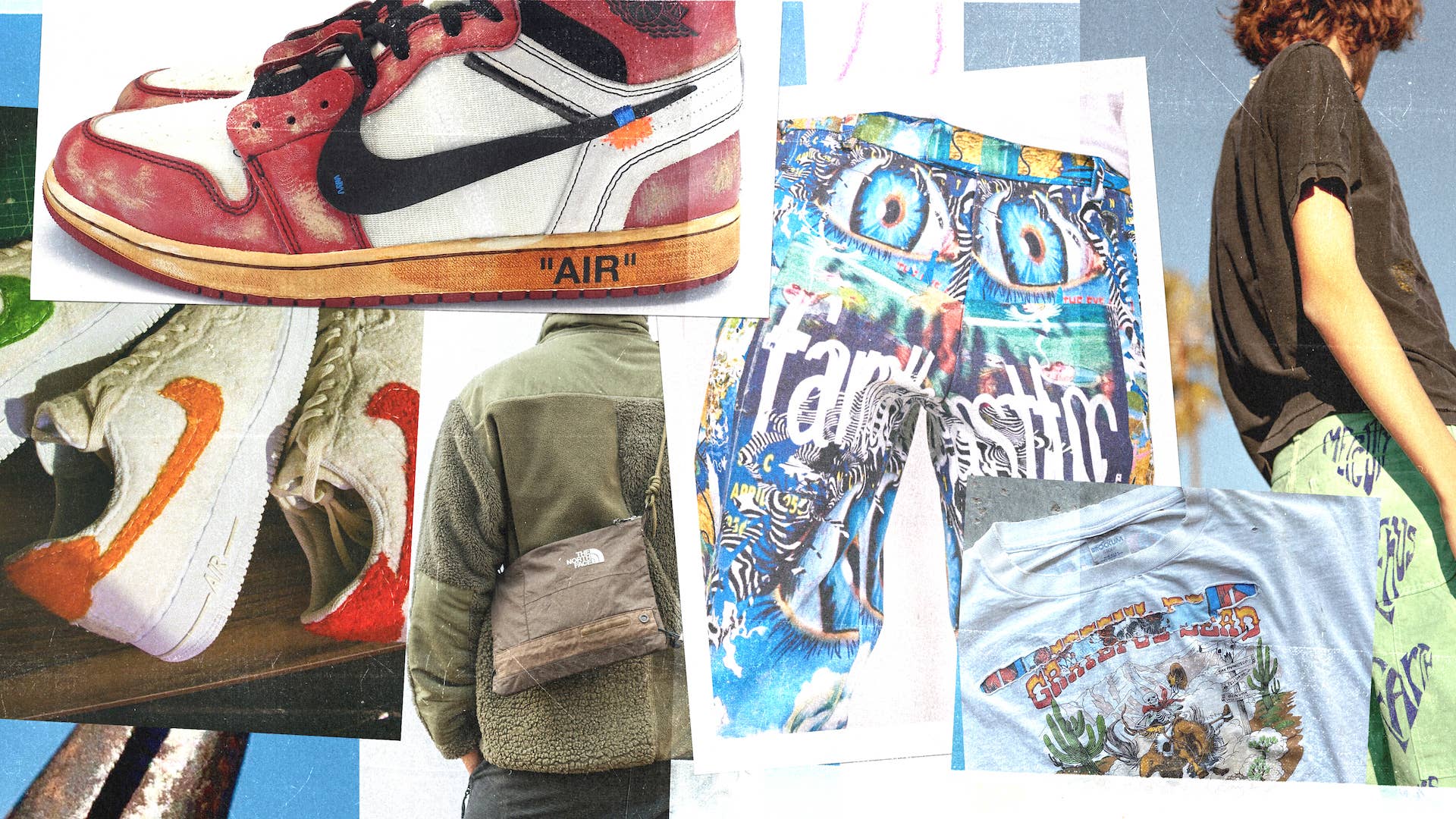
DIY and customization is intrinsic to streetwear. Whether it was Dapper Dan making something completely new out of designer textiles or Ari Forman constructing the Menthol 10 sneakers, repurposing logos, creating bootlegs, and producing something out of nothing is a streetwear pillar that’s no longer an underground phenomenon—just go to pop star Billie Eilish’s IG page.
We want to give a shout out to OGs like The Shirt Kings and Darren Romanelli, and designers who’ve come up after them like Vandy, Etai Drori, Imran Potato, and Nicole McLaughlin. But with this list we focused on some of the newer DIY designers who are carving out their own paths.
We spoke to creators like Juliet Johnstone, whose hand painted pants look like pieces of art (Bella Hadid loves them), Mark Sabino, who is known for his music-themed jewelry but just received a huge cosign from Rihanna, who wore a New York Yankees bucket hat he designed, and Phillip Leyesa, who is making new sneakers feel old again—in the best way possible—and doing inventive things with patches. And aside from making cool things, sustainability is at the forefront for most of these designers, which we also want to commend.
Read on to see the 15 Best DIY streetwear designers right now and learn more about what inspires them, their process, and what else they want to create down the line.

For the Japanese designer Dimda, luxury is in the eye of the beholder. Why pay $800 for a Prada bag when he can simply make one out of dish sponges? Why spend $3,000 on a monogrammed Dior saddle bag when he can create a similar version using some old Dior pillow sheets? Throughout Dimda’s Instagram, you’ll see many luxurious DIY items that you’ll never find in stores, such as a Dior bubble tea carrier or a Louis Vuitton mint case. But what’s the price of the faux luxury items derived by Dimda?
“This is my hobby so it’s not for sale,” says Dimda, who also reveals that brands like Dior, Nike, and Prada have all reached out to him, but he's secretive about the details. “Many influencers and sometimes celebrities have asked to purchase my items. But since it's just my hobby, I refuse.”
Since making a pair of pants out of an Ikea Frakta bag three years ago, Dimda has been producing some of the most eye catching DIY garments found on Instagram today. All of his items are handmade and typically take one to three days to make. When it comes to sourcing materials to upcycle—and explaining how he has acquired so many Prada badges—he says that many worn or damaged designer goods pop up in charity shops throughout Japan. Perhaps some of his most unique creations to date are the belts, jean pockets, and shirt cuffs he creates by cutting up old Nike Air Force 1s and Cortezes.
Dimda says his parents taught him how to sew and that he has never attended fashion school. When it comes to designing his garments, he doesn’t sketch out anything and goes straight to the sewing machine. For bags, he makes a mold first, cuts up fabric, and then sews around the mold. The only tools that Dimda uses are a sewing machine and glue, when necessary. Although pieces made out of old Nike sneakers look difficult to make, Dimda says he just removes the parts that are hard to sew together before running it through the sewing machine.
He has recently even turned some old pairs of Nikes into tissue boxes and cactus-shaped cushion sculptures.
When it comes to apparel, Dimda says he enjoys making custom blazers the most nowadays. Although he currently isn’t selling his creations, he does envision starting his own brand in the future.
“I have ideas, and I want to continue making them,” Dimda tells Complex. “I especially like making interior items these days. I used to make only bags and clothes before, but I want to make a full collection.” —Lei Takanashi
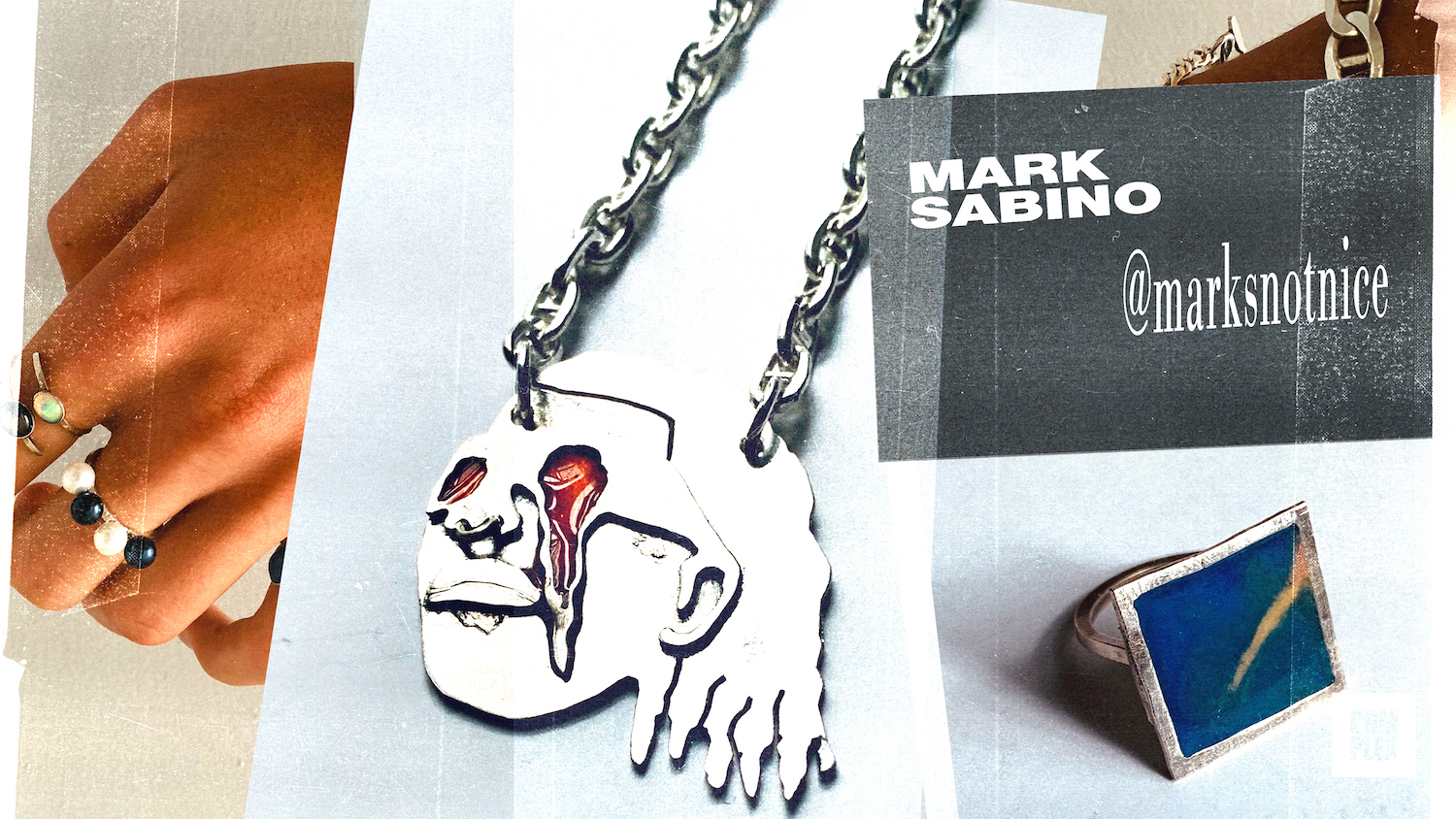
Anyone who’s always lurking on Twitter has definitely come across a couple of Mark Sabino’s humorous tweets on the current state of fashion. However, it’s the 23-year-old designer’s handmade jewelry that has caught our attention. Much of Sabino’s jewelry is inspired by music, which has led to unique pieces such as Yeezus necklaces, hand painted enamel Dirty Sprite 2 rings, and sterling silver Kid A bracelets.
“My biggest inspiration when it comes to jewelry will always be Pharrell. His chains and the way he wore them are just permanently embedded in my brain from when I was younger,” says Sabino, who studied Industrial Design at Pratt with a specialization in furniture. Sabino’s experience designing furniture taught him the basics of woodwork, sawing through metals, sewing, and soldering, which all help with making jewelry.
“My industrial design background plays a huge role in how I make my pieces. A lot of my work is reflective of my favorite designers and artists. People like Donald Judd, Isamu Noguchi, David Hammons, and Jean Prouvé all have a small fingerprint in everything I make.”
Sabino grew up making art. He remembers his first foray into designing clothing as a teenager was just painting on old sweatshirts he owned. After enrolling at Pratt, he wanted to take a sneaker design course but was never able to because the class filled up quickly. So instead, he took an "Intro to Jewelry" class and liked it. From there he continued to make jewelry.
“It usually takes me anywhere from 2 to 12 hours to make some of my pieces depending on how intricate they are,” says Sabino, whose first big jewelry pieces included a New York Yankees pendant and a silver ring that resembled a Band-Aid. “I only took that one semester of jewelry making and just taught myself the rest. I’m still learning and making it all out of my apartment. So most of the difficulties come from me trying something too crazy without the proper tools for it.”
All of Sabino’s products are made to order and cost between $100 and $1,000. Although he’s garnered attention for his jewelry, he wants to design other items. Recently, Rihanna wore a reconstructed New York Yankees bucket hat he made.
“I really have a lot of ideas for all types of products, and a goal of mine would be to eventually get into a creative director position that will let me get them out,” says Sabino, whose furniture was exhibited at the Brooklyn Museum last summer. “I used to make ‘collections’ of clothes and furniture in college, but I didn’t think I had the right audience for it. I’d love to dive back into it if I had the right opportunity or platform.”—Lei Takanashi
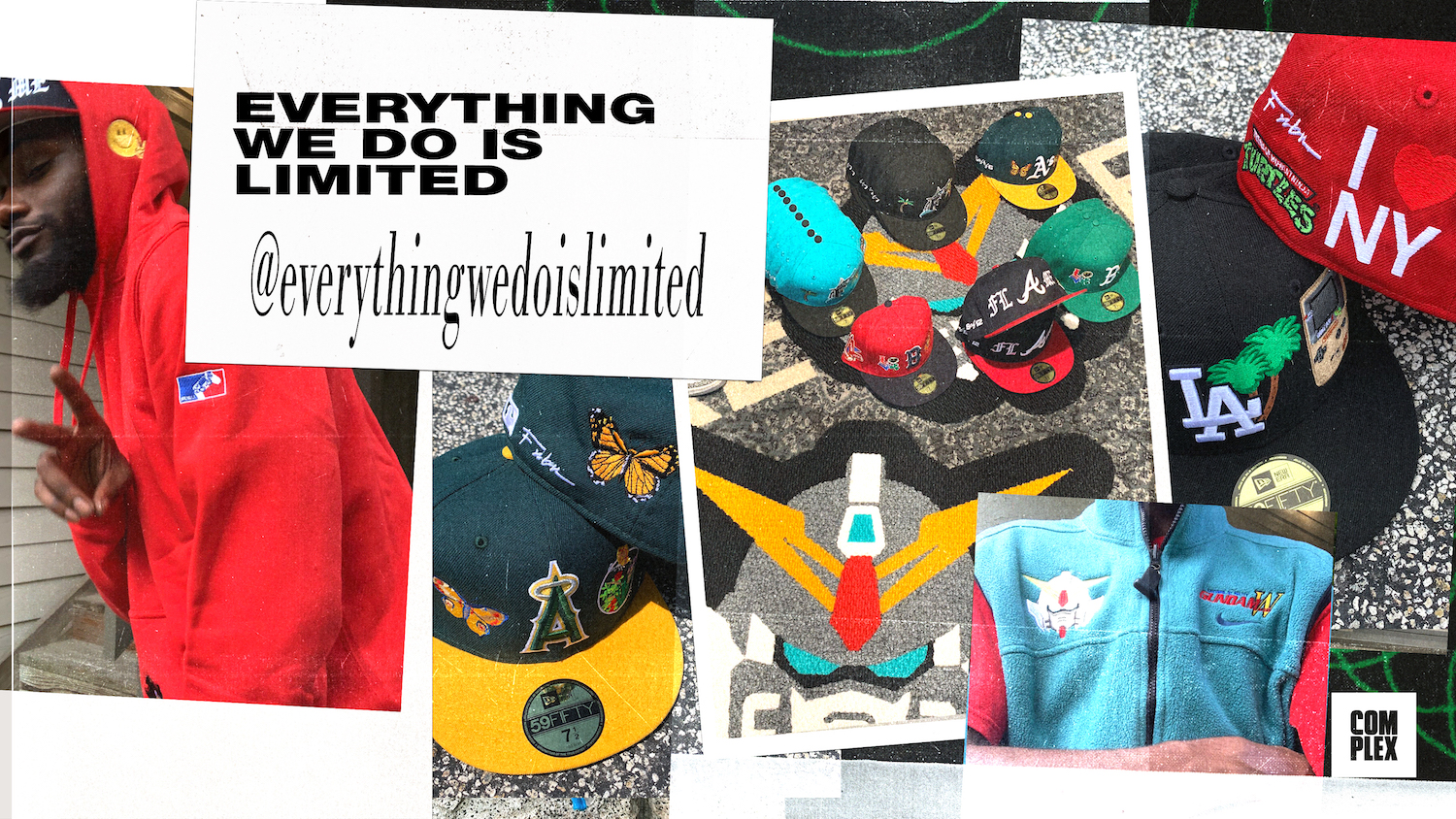
Most hip-hop heads have heard Lordfubu’s infamous producer tagline “Fubu got that flame” on those bangers he dropped with ASAP Ant or from listening to his remix of Playboi Carti’s “Talk” on SoundCloud. However, Darius McQueen is also the 27-year-old mastermind behind Everything We Do Is Limited, a streetwear brand known for producing some of the illest customs in the game. The Florida-based designer is best known for his embroidered New Era fitted caps that he’s made for NBA stars like Jordan Clarkson. Each retails for $160 and some of his designs are even resold on Grailed.
“My designs are inspired by my childhood. I think it's very important not to lose your youth. Our youth keeps the flame burning inside of us, especially the creatives,” says Lordfubu, who has released garments embroidered with characters fromYu Yu Hakushoor GameBoy Colors. “Whenever I feel stuck, I like to go back to a simpler time, a time where the only worries we had were if girls really had the cooties or not.”
EWDIL has only been around since March, but has quickly gained a cult following these past six months. Other embroidered goods include vintage Nike sweatshirts with Graduation bears and jackets with Sukajin-esque embroidery. Fubu learned how to embroider by watching YouTube videos and sharpened his skills through trial and error. His works typically take 1 to 2 days to make. After running garments through a sewing machine, he finishes them up by hand to remove extra stitching and dust for quality control. Although it has been a longtime dream of Fubu to produce clothing, he says that he doesn’t really want EWDIL to become anything specific.
“I just want to give people a part of my world. Something they can keep forever,” he tells Complex. “I stopped selling beats because I never wanted to sell beats. So I started selling everything else. As far as a line or collection, anything is possible. For now, my goal is to make sure whoever supports us is in good hands.”—Lei Takanashi
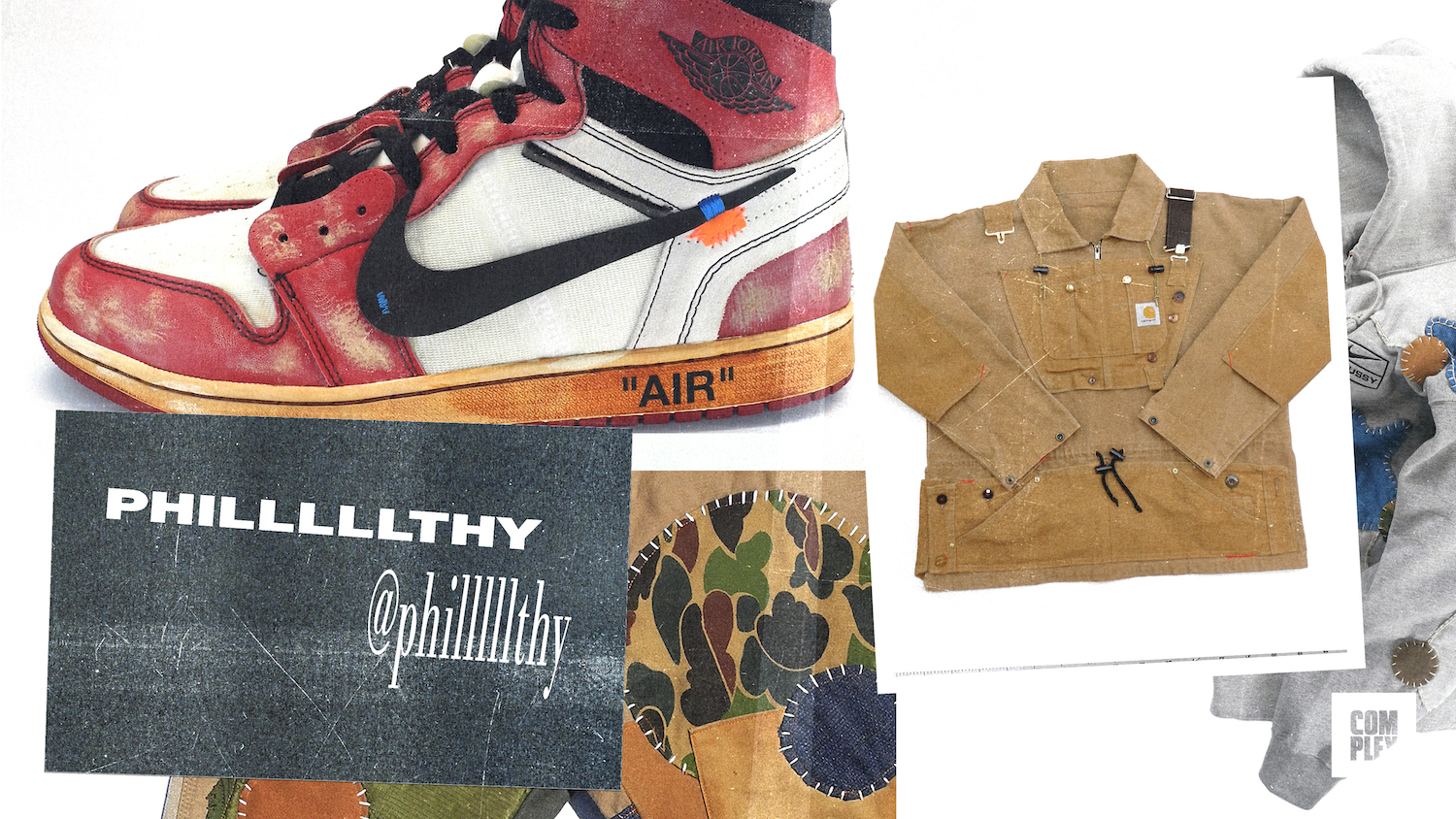
If you’ve scrolled through Instagram and your algorithm caters to sneakers and streetwear then chances are you have been privy to Phillip Leyesa’s creations. The Brooklyn-based creative initially made waves this past March when he posted a pair of custom Air Jordan IVs that fused the “Cool Grey” and “Winterized” colorways with hand stitching said to be inspired by the Union x Air Jordan I (this is before the Union x Air Jordan IV was revealed) to his Instagram page, Philllllthy. He followed it up with a Stüssy x Nike crewneck and Carhartt jackets customized with hand-sewn patchwork. He even converted one into a hoodie. Leyesa hasn’t let up since.
“Each shoe took about 12 hours to hand stitch. That experience really taught me the value of hard work paying off,” Leyesa tells Complex. “You know that feeling when you turn around and admire your car after its parked? Yeah I get that feeling when I look at these sneakers.”
Leyesa’s start in the DIY space came partially out of necessity. He recalls having minimal closet space when he moved to Brooklyn. His solution was fusing pieces together to create unique one of ones for himself. Despite all of the traction his creations have gotten to date, Leyesa still does this all part-time. He currently works as a display artist at the Urban Outfitters in SoHo.
The 26-year-old’s biggest creation so far is probably his collection of hand-distressed Air Jordan Is made to resemble an original pair from 1985. Two of the NBA’s most stylish players, Shai Gilgeous-Alexander and PJ Tucker, even purchased their own pairs. He’s used the same distressing formula on a pair of Off-White x Nike Dunk Lows.
Even though he is partially responsible for a resurgence in distressed customs in the sneaker community, that isn’t all he’s done. He also fully recreates popular pairs. For instance, he turned the “Sponge” CPFM x Nike Blazer Mid into a high-top by sewing on a corduroy ankle collar. He’s remixed an Aimé Leon Dore logo T-shirt with his own embroidery. His creations are all about individuality.
“I want to make more stuff so more people can have it. But I still love the idea of one-of-one items,” say Leyesa. “[A goal of mine] is having an established brand, being out there and known. I would love to see Travis Scott courtside wearing a pair of my patchwork pants.”
All of the products are currently made by Leyesa in his Bushwick apartment, but he hopes to eventually have his own official studio space. But he will keep creating regardless. He recently announced a collaborative drop with StockX set for later this month. Don’t expect it to be the last. —Mike DeStefano

Most of our old clothing lives in a landfill. However, 24-year-old Londoner Jaimus Tailor is trying to change that. The DIY designer is leading the movement to upcycle garments into fresh new pieces through his brand Greater Goods. He breathes new life into discarded pieces of outerwear from outdoor brands such as The North Face and Arc’Teryx.
“It all started with my own North Face jacket that I cut up to make into a tote bag,” says Tailor, who has a background in graphic design and started upcycling by turning discarded pieces of wood into new pieces of furniture. “Since then, I’ve just carried on using their products as they are good quality and easy to source. I’ve used many other brands since then and a lot of them have even got in touch so I guess we’ll see what happens next.”
Although Tailor learned how to use a sewing machine watching YouTube videos and getting lessons from his sister this past year, producer Knxwledge and the pioneering streetwear designer Jeff Staple have already cosigned his pieces. Greater Goods’ one of one creations are primarily sold through its online store for prices ranging between £59-£149.00 (app. $76-$192). Although the brand is known for its bags, Tailor has started producing ready-to-wear pieces like Arc’Teryx kimonos, or a utility vest made from a limited edition Futura Laboratories Gore-Tex poncho. He rarely takes custom orders.
Tailor wants Greater Goods to stay committed to its core guidelines of making new garments out of old or damaged products. He wants to expand the range of products his brand offers and help bigger brands design sustainable clothing.
“I aim to show that sustainability doesn’t have to be super serious. I hope to show that using old materials is normal and should be put into practice more often out of necessity,” says Tailor, who has collaborated with sustainable brands like Story MFG and Paynter Jacket Co. ”In the future, I aim to run a workshop that teaches people how to create their own products using old or damaged garments and to show that the creative process is very rewarding with suitability being almost a by-product of the process.”—Lei Takanashi
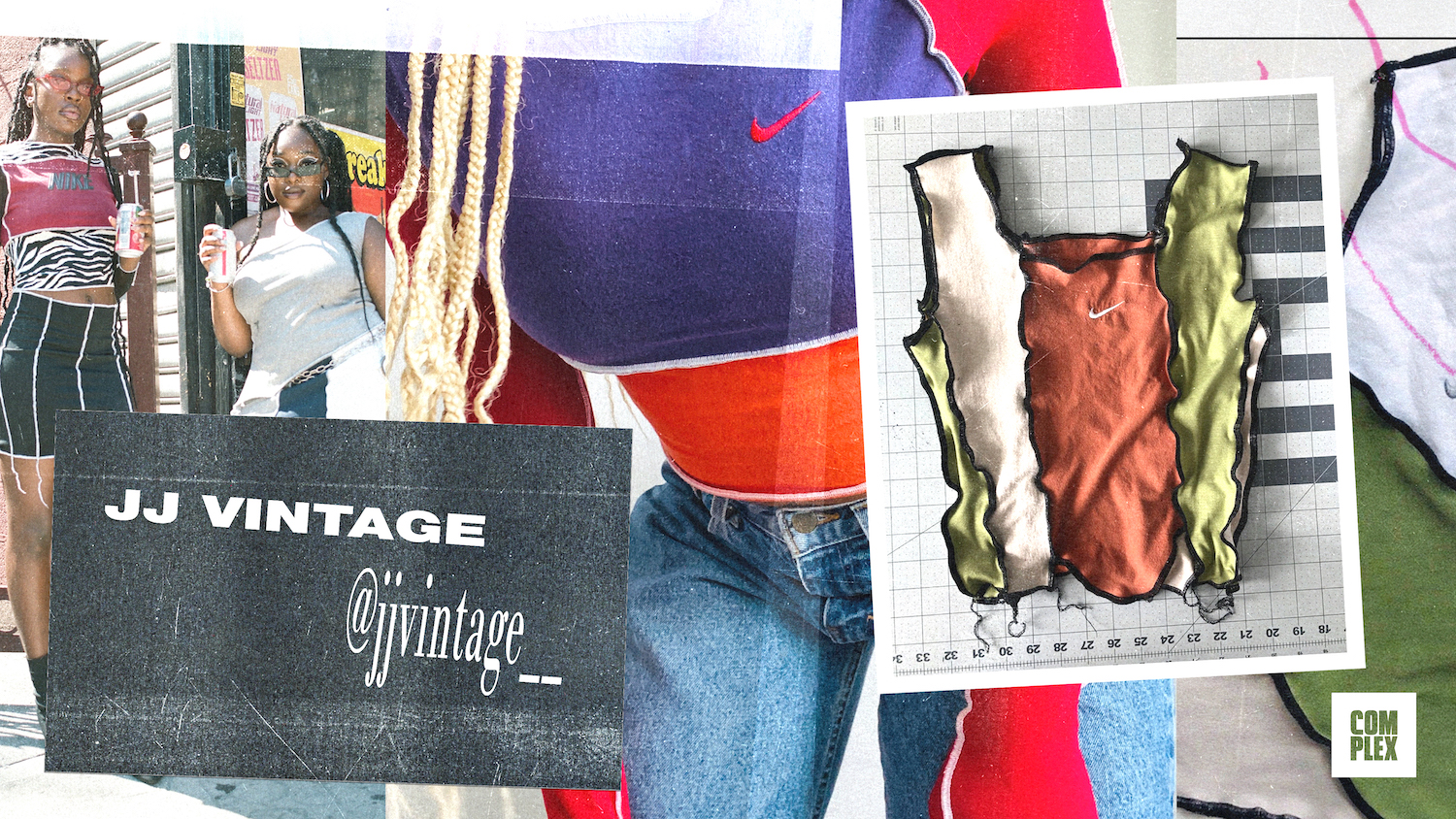
Jasmine James got into thrifting while she was in college. She didn’t have a lot of money, but wanted to be stylish, so she frequented thrift stores and purchased vintage rap T-shirts along with sportswear from The North Face, Tommy Hilfiger, Ralph Lauren, and Nike. After coming across Round Two’s YouTube show in 2015, she realized how valuable her collection was and started to sell her pieces on Depop.
“I realized by watching the show that vintage is never going to die, but it has become very competitive and everyone is figuring out the market,” says James. “So for me, I wanted to create reworked garments out of my own vintage items and make something that’s still on trend but a little bit different from what everyone else is doing.”
This led her to introducing JJ Vintage, her line that includes patchwork tanks, skirts, and dresses made from thrifted clothes. She made her first patchwork tank top, which has become her signature, last year. James says she had a hole in her shirt, so she decided to cut it up and sew it back together using different strips of fabric.
“I didn’t think anything of it until I went to an event and everyone was asking me where I got my top from,” says James.
She started selling them on Depop, but sales spiked once Depop featured her on its IG page. James says she was receiving more than 200 DMs through IG and the Depop app.
James, who studied business management and entrepreneurship in college, taught herself how to sew in 2015 through YouTube videos. She’s created a signature look that focuses on colors, shapes, and making sportswear more feminine. James says it takes her about 30 to 45 minutes to create a piece. She starts by putting together different color combinations, cutting out the patterns, and constructing the garment. The items have a handmade feel with exposed seams, but strong construction.
“I’ve always been fascinated with color and being able to put together unexpected colors,” says James.
She sells these pieces, which retail from $55 to $95, directly from her website, and on Depop from time to time. She offers a specific amount of custom orders once per month too. Right now she isn’t working with any retailers, but says brands have reached out to collaborate.
“I want to make sure it’s the right choice for me before I make that decision,” says James, whose mission is to recycle, reuse, and repurpose.
Before the pandemic hit, James was in the midst of developing her own line, which was supposed to launch in late spring, but after the killings of Breonna Taylor, Ahmaud Arbery and George Floyd, along with being furloughed from her job, she says she was unmotivated to do anything, but she’s still working on it.
“I want to step outside of my comfort zone when it comes to fashion. I have a lot of unreleased designs that I’m excited to share,” says James. “I hope I can achieve expanding my brand and establishing a name for myself where everyone knows exactly who JJ Vintage is.”—Aria Hughes

If you’ve seen heads in New York rocking Biggie jackets or Yankee fitteds with traditional Japanese Sashiko stitching, you already know it had to be a Loso exclusive. The 28-year-old Mexican American designer from the Bronx has been cooking up some of the freshest DIY garments out of New York these past couple years. But don’t get it twisted, Loso has been in this game for a minute. Travis Scott rocked a pair of custom Goyard leather Vans Loso crafted five years ago. Nowadays, rappers like Rich the Kid, Pierre Bourne, and Joey Badass wear his pieces, which include accessories like hats and specially made cut and sew garments. Currently, his prices range between $150 for a stitched hat via his online store to $1,800 for a commissioned piece like a distressed denim jacket.
“I started designing clothing by reworking all my old designer garments that no longer fit me,” says Loso, who has altered rare Kapital Kountry jeans with snakeskin and sewn one of one kimonos out of CdG SHIRT tops. “It was more than just expressing myself. It helped me cope with depression after having to bury three friends weeks apart. I just stayed home that year and taught myself everything because I wasn’t going out at all.”
Loso never went to fashion school, but grew up understanding materials and the business of fashion by attending trade shows. Currently, one of his most recognizable items are his popular hand-stitched fitted caps. Although one hat takes nearly 40 minutes to make, they sell out within a minute when they drop online. “I learned to do Sashiko stitching by just noticing the technique used on my personal Visvim garments,” says Loso, when asked about the traditional Japanese embroidering technique.
Although Loso’s work is primarily inspired by Rick Owens and Ralph Lauren, he points to his own personal upbringing in New York as another big influence on his designs. That point of reference is what led to some of his most ingenious pieces such as denim dyed with Hennesey or “Buck 50’d” distressed denim. Recently, larger labels have taken notice of Loso’s work and have tapped him to create. He helped craft leather bags, Sashiko stitched caps, and an upcycled trench coat made out of vintage Nike-T-shirts for (B).Stroy’s Season 4 collection. Loso also brought his wristwork to KidSuper’s Paris Fashion Week debut last year, showcasing his upcycling and stitching skills on a number of runway pieces. In the future, Loso hopes to be able to open his own business to support his hometown.
“I want to open up a clothing factory here in the South Bronx and employ all my people,” he tells Complex. “It’s been nothing but nonstop work these last couple of years, ain’t no stopping now.”—Lei Takanashi
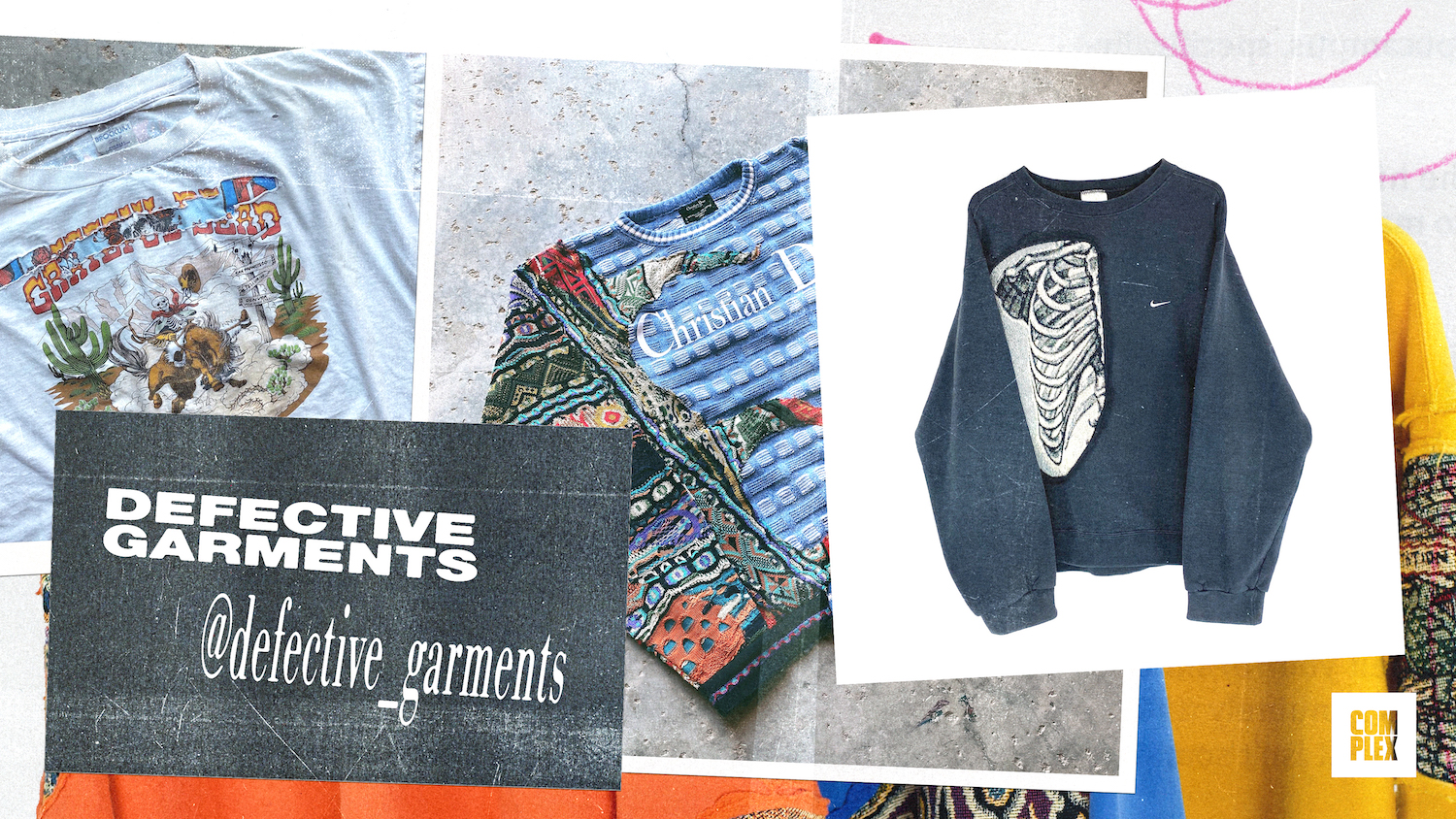
When 27-year-old clothing designer Zac Cabrera went thrifting throughout his home state of Arizona, he would always come across pieces with holes and stains, which were harder to flip online. Since thrifting was a part of Cabrera’s livelihood, he decided that instead of trying to sell off these worn pieces, it would be more sensible to rework them
“Being able to turn those pieces into something people would want to wear was the goal, whether it be tie-dying them or adding another piece of fabric to it,” says Cabrera, who has sold his reworked vintage goods to basketball players like Shai Gilgeous-Alexander and Jaxson Hayes. ”Everything is made by hand and I enjoy learning as I go. You can kind of see the growth from the simple stuff I used to make to the more complex pieces today.”
Nowadays, Cabrera has been recognized for his unique cut and sew creations such as “infected sweaters,” which are custom vintage crewnecks embellished with pieces from old Coogi knit sweaters. He makes other custom crewnecks from tapestry blankets covered with iconic anime scenes from shows like Yu-Gi-Oh or Dragonball-Z.
Other pieces Cabrera makes defy the norms of most DIY projects—a vintage North Face Denali fleece fused with a M-65 jacket or a Carhartt work jacket with backpack straps attached to the back.
“I completely disassembled a 1950s military backpack and initially was going to just add the pockets to the sleeves of the Carhartt jacket, but as I kept working, I decided to add the straps to the back of it, making it stand out more,” says Cabrera, who points out that he was primarily inspired to explore cut & sew after seeing the work of @adamaneven. “This was made in the early stages when I was new to sewing. I went through a few needles trying to finish this one up due to the thickness of the canvas from both pieces.”
Cabrera sells his pieces through his web store and typically only drops 3-5 one of one garments at a time. He says he always makes sure that each piece is made in a completely different style. Although his work has also developed a cult following, Cabrera is enjoying the moment and doesn’t really have plans to launch a full collection. However, he would like to collaborate with larger brands if given the opportunity.
“My goal is to just keep creating and growing,” says Cabrera. “It would be awesome to collaborate with a brand on a collection inspired by Defective Garments to get it into more hands.” —Lei Takanashi
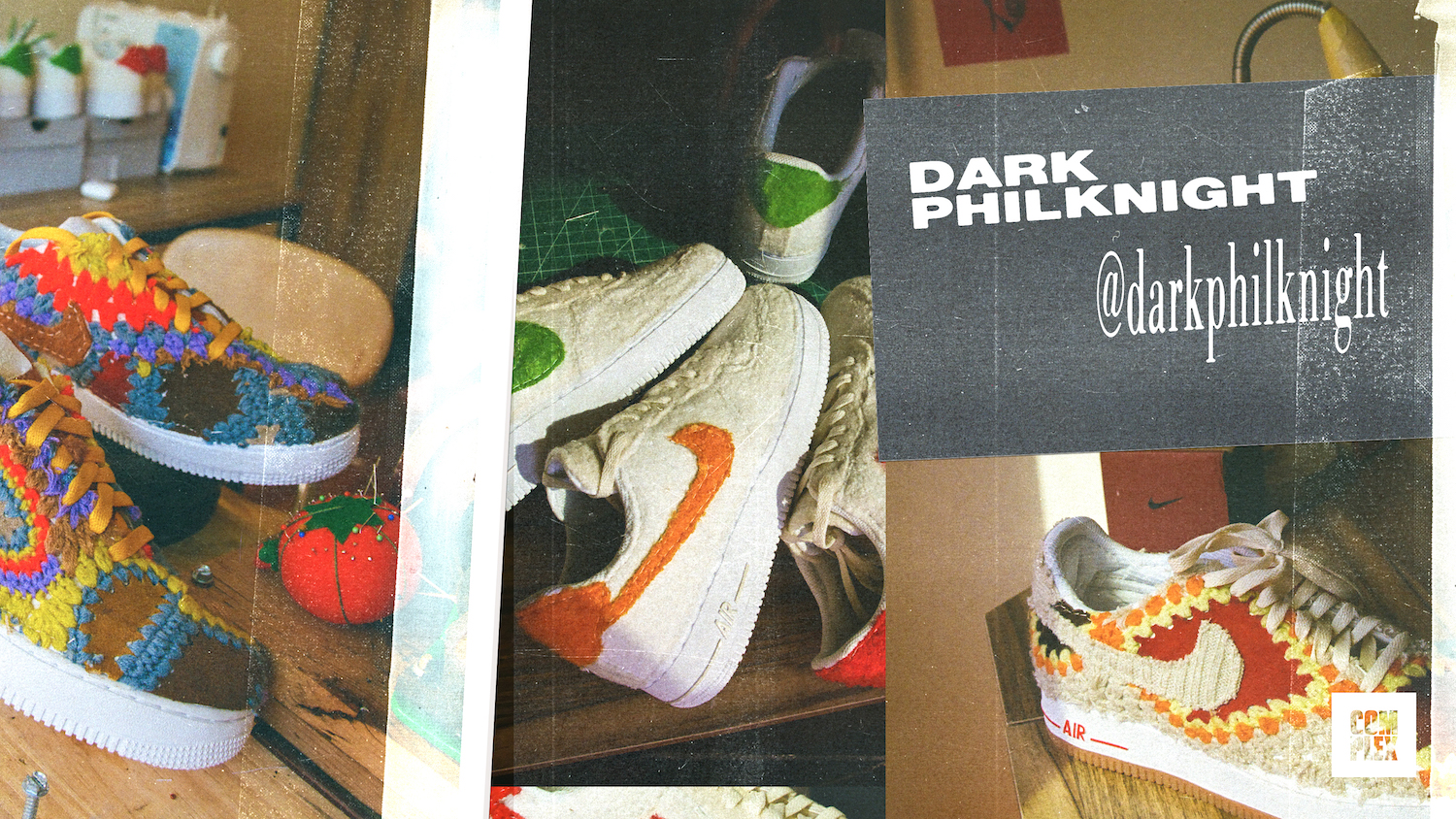
Adewale Quadri (aka The DarkPhilKnight) has only been creating his one-of-a-kind custom sneakers for four months, but quickly began to receive attention for his unique takes on the classic Air Force 1. Lil Yachty, Smino, Westside Gunn, and even Justin Bieber have already ordered their own pairs. Popular Instagram moodboard Hidden.NY has posted his creations. And celebrity jeweler Greg Yuna can be spotted in his comments giving him praise. But it all started when he wanted to reconstruct his girlfriend’s worn down pair of Nike Cortez.
“I have always had a passion for shoe design, and had been wanting to start something for a while,” Quadri tells Complex. “Quarantine definitely opened the door for me to solely focus on this and develop my process.”
What makes the Chicago-born, New York-based creator’s Air Force 1s unique is that rather than showing off leather or suede, the uppers have been covered in colorful wool overlay that is more reminiscent of a hand knit sweater than a sneaker. He says it takes roughly six to eight hours to make one pair using a hand crank sewing machine. Being a one-man operation, he’s been able to produce in a timely fashion by keeping the batches of each colorway limited and utilizing a pre-order system through his website. He charges $275 for white-based versions, but the more colorful crochet versions cost $500 or more. While he hopes to keep the more intricate customs limited, Quadri also says he would like to produce a more widely available range of products in the future and even experiment with apparel as well.
“I'm in the process of trying out new silhouettes and experimenting with different fabrics and treatments,” he says. “I want this to be an outlet to show people from where I'm from that you can use your creativity in positive ways and the possibilities are really endless.” —Mike DeStefano
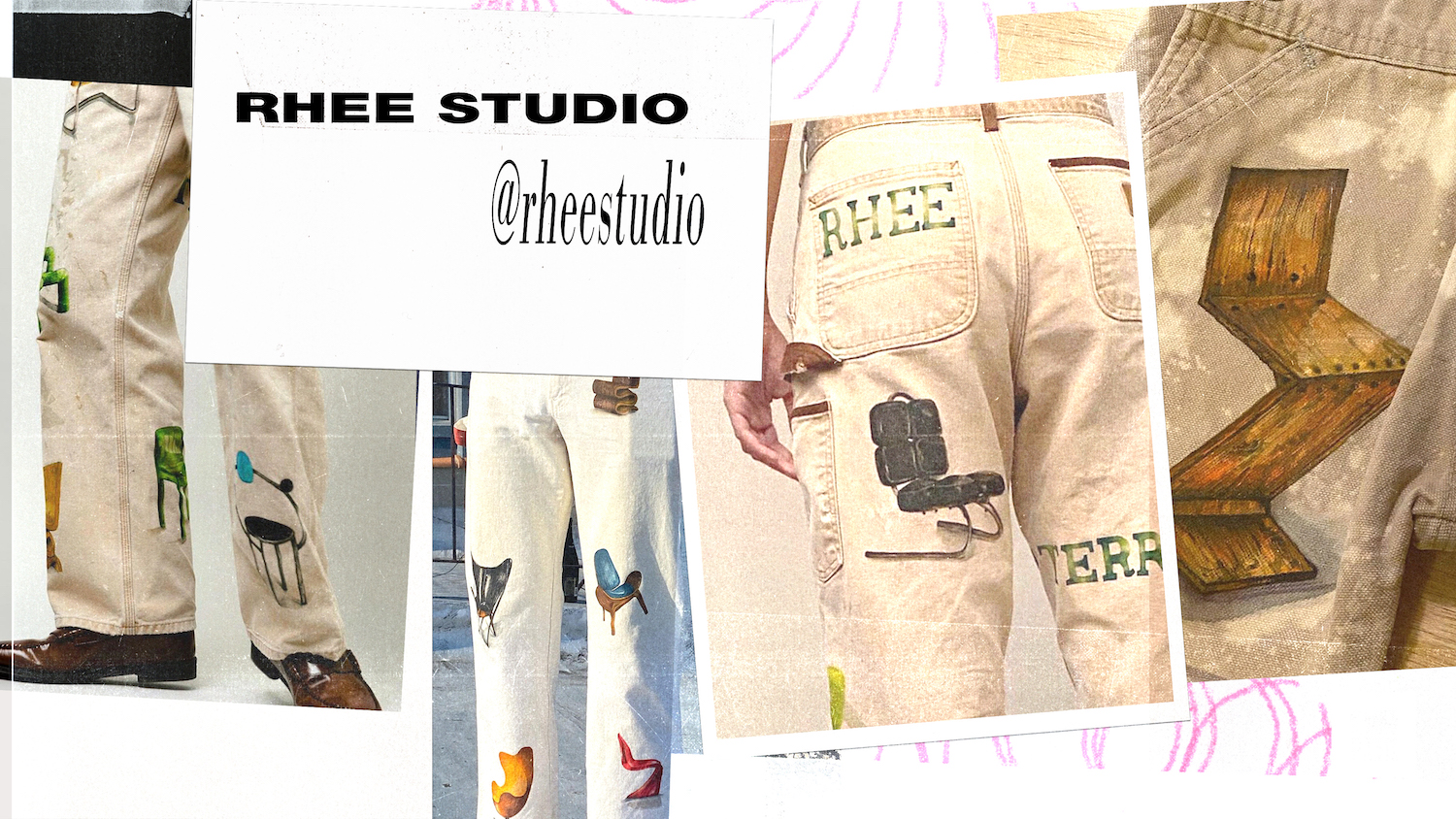
Cherry Kim began creating during quarantine, but art has always been a passion. She took lessons as a child and has maintained the skill through her career in fashion. One day she decided to draw on an old pair of Dickies pants. It was simply a way to take her mind off of the uncertainty caused by Covid-19.. The result was a pair of work pants covered in illustrations of furniture like chairs, lamps, and tables in various shapes and colors. They reflect her newly found appreciation for home goods during quarantine.
“Personally, the idea of buying a piece of well-designed furniture that you interact with and see on a day to day basis feels like a smart investment. But at this point in my life it also feels very inaccessible,” Kim tells Complex. “The idea of drawing these objects onto something wearable was somewhat a reaction to this. Showcasing a taste level that I can't easily access or afford right now.”
Her friends would take an interest in her one-of-a-kind pants. She saw the potential to grow her new hobby into something more and it naturally progressed into her brand, Rhee. Each order begins the same way, with Kim personally sourcing a pair of vintage pants. From there, it gets very personal to the buyer. She says she welcomes reference images and can paint specific names, initials, and phrases of the customer’s choosing. A pair takes anywhere from 12 to 15 hours to fully complete and costs anywhere from $395 to $625. All in all, pieces arrive to the buyer in roughly four or five weeks. While she says her current priority is direct-to-consumer customs, an exclusive release with a retailer is down the line. Small runs of accessories and basics at affordable price points are also in the works.
“I think I'm at a point in my career where I do want to own something and Rhee is an outlet that allows me to collaborate with others, share new work, and build a community,” says Kim. “I don't need it to be a huge thing that makes a ton of profit or has a huge following. I like that it feels intimate and isn't seasonal or trend-driven.” —Mike DeStefano

Emma McKee wasn’t always into cross stitching. She recalls dodging her mother’s attempts to try and teach her as a child before ultimately deciding to give it a try in 2014. Back then, it was just a personal hobby though. She stitched a Pro Era-themed sweater for herself to wear to a Joey Badass show in Toronto and remembers how people reacted to it.
“That sweater was like wearing a VIP wristband the whole night. I wanted to get to the side door, there was a huge crowd and it parted for me as everyone saw the stitch,” McKee tells Complex. “I knew I was on to something.”
Nowadays, McKee has turned her talent into its own business. She’s so good at it she goes by the Stitch Gawd and calls the skill a “mutant super power.” Her list of clients is impressive. She says Chance the Rapper helped put her name on the map. He's worn her custom denim jackets with graphics like a lion's head and his signature "3" stitched across the back on the cover of Billboard on muliple occasions. Other major artists like Kendrick Lamar, Lil Yachty, and SZA followed. She has stitched tributes to late artists like Nipsey Hussle and Mac Miller. A Chicago native, she’s had the opportunity to craft one of one jackets for Chicago Bulls star Zach LaVine and designer Joe "Freshgoods" Robinson. She hopes a portrait of civil rights activist Fred Hampton that she stitched will one day be displayed in the Museum of Contemporary Art Chicago. She’s also been tapped for campaigns like Pabst Blue Ribbon’s “Grab a Pabst” for which she made a retro-inspired leather koozie.
The interesting thing about McKee is that she doesn’t actually sell her creations. She only works with clients who she’s inspired by. She works on a barter system. There are no retailers and she says payment for her corporate work is funneled straight back into her creations. Eventually she wants to hire a small team to produce more pieces, but has no interest of starting a full line or releasing collections.
“Mass production is so bad for the environment, and unless I was able to do something limited with someone else who already has the means of production, I would be wary of getting into that side of things,” says McKee. “I like the idea of it being a small club of excellent people. I feel like there is some alchemy in making things by hand. These fits are armor for the soul and I don’t want to lose that magic.” —Mike DeStefano

The formation of Bentgablenits is a bit unorthodox, but it’s working. People like LeBron James, Drake, Travis Scott, and Bella Hadid are wearing its creations–reworked vintage Nike sweaters adorned handmade Swooshes. Angelo Nitsopoulos (aka Nits) saw a silk Nike Swoosh with crochet trim laying on a table during a visit to the Bent Gable Design Studio. Brenda Bent and Karen Gable made it for a friend. Nitsopoulos is best friends with Brenda’s two sons. As someone into vintage clothing and sneakers, Nits immediately saw the potential. Going forward, he would source vintage hoodies and crewneck sweaters for the Toronto-based interior design duo to recreate with their unique velvet Nike Swooshes, colorful rope borders, vintage crocheted flowers, and mohair.
Before the project took off, Bent and Gable’s interior design studio was responsible for the interior’s of some of Toronto’s most popular restaurants like the Thompson Hotel Diner and Rosalinda. Each had prior experience in the fashion world too with degrees in fashion design and prior work in the industry during the ‘80s and ‘90s before ultimately joining forces for their own studio.
Every Bentgablenits piece is made by hand and created as a one-of-one item to be sold in limited runs on the trio’s web store with prices ranging from $200 to $1,500. They also recently created a special capsule sold exclusively at Selfridges in London as part of the retailer’s sustainable “Project Earth” campaign. Their latest release is a series of vintage Carhartt work jackets that have been transformed with premium details like silk collars and fabric Carhartt logo stitched to the chest. Varsity jackets and pants have been released before too. Moving forward, they hope to expand their offering to include official collaborations.
“We look forward to collaborations,” says a representative on behalf of the collective via email. “Having access to iconic brands that are dead, or seconds from it, and bringing them back to life is exhilarating for us. That’s the creative challenge.” —Mike DeStefano
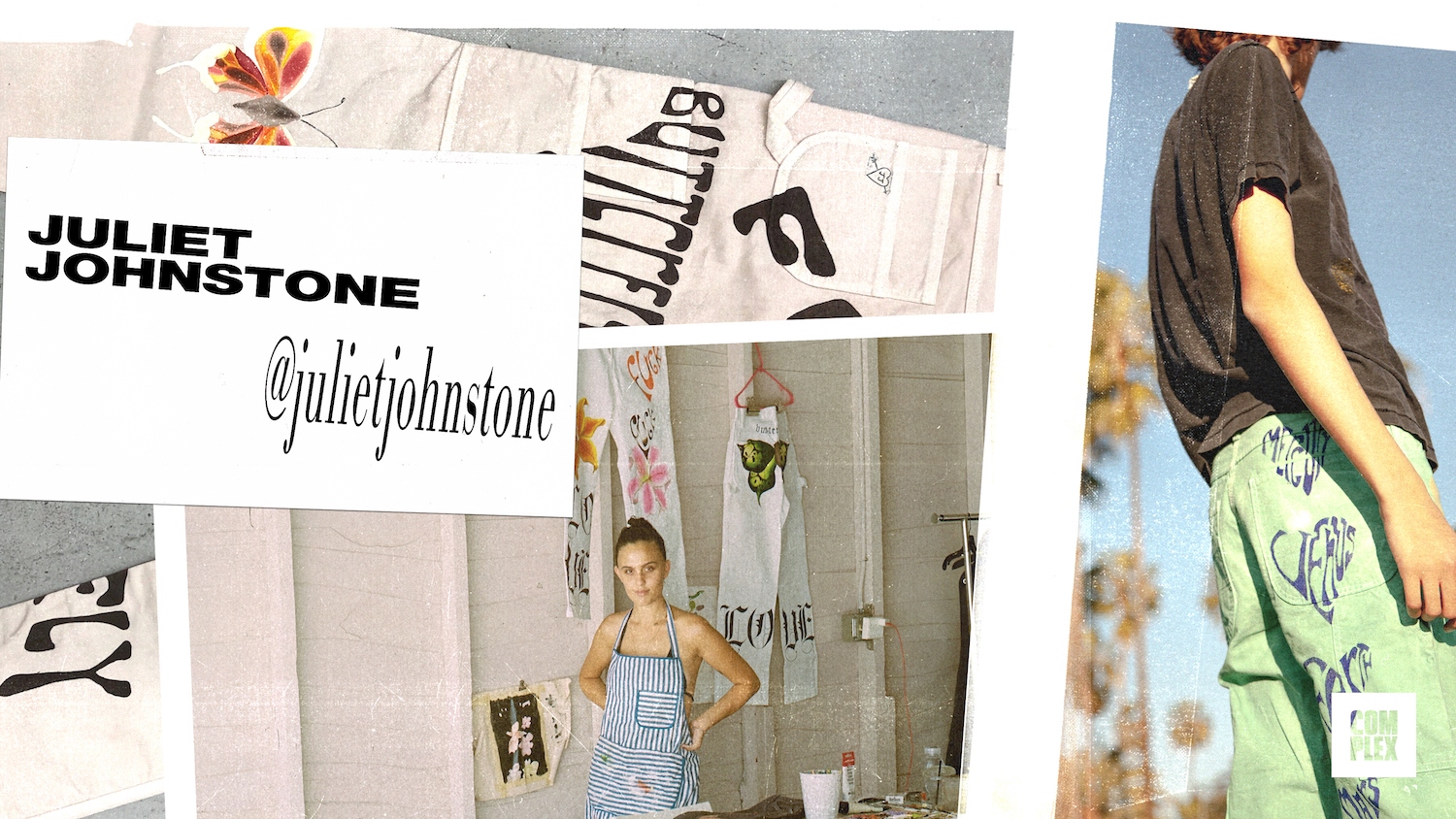
Juliet Johnstone, who studied fine art at Parsons, was working as a studio assistant after she graduated and didn't love it. She felt like she had to make a specific type of art, and she didn’t like how intimidating the art industry was.
“I was feeling this really big pressure to be making super highly conceptualized work, and I felt stuck,” says Johnstone. “And I just had a problem with the art world that I was rolling in. It just wasn't accessible to people who didn't go to art school.”
She moved back to Los Angeles, her hometown, and became friends with people working in fashion like Reese Cooper, and Charlie Giannetti, who owns a factory. She never had an interest in working in fashion, but one day she ran out of canvas and just started painting on her pants. She wore them around Los Angeles and because of the responses she received, she considered making more.
“I was getting stopped in the streets,” says Johnstone. “Everyone wanted to know where to purchase them. I didn’t have a website so I would just say, ‘I guess you can follow me on IG.’ And my friends were also encouraging me. So it was pretty natural. And then from there, I started posting them on IG, and they started selling out within a few seconds. It was really fast. I was not prepared at all.”
Johnstone uses her background in fine art to create one-of-one pieces. Her most popular designs are her workwear pants, which she sources from different vendors and hand paints with flowers, psychedelic references from the ‘60s, and Old English text. But she also paints on cotton tank tops, track pants, and she’s recently released fleece pullovers and handbags. She pulls ideas from vintage botanical books, motorcycle culture, and old posters.
“I try to keep it pretty positive,” says Johnstone. “I think the world is a really fucked up place right now, and it's nice to be able to offer a little bit of light.”
Johnstone works on five pairs of pants at a time, which are numbered and usually take her two weeks to finish. She says it’s a 10-step process. She paints the pants and overdyes them. She mixes the dye herself and makes her own paint colors, which is why the pants retail from $350 to $450. So far they’ve caught the attention of Bella Hadid, who posted an IG photoshoot wearing the pants, Dua Lipa, and Rihanna, who purchased four pairs but hasn’t been photographed wearing them yet.
She collaborated with Cooper on his Spring/Summer 2021 collection, but for now Johnstone wants to keep her operation small. She accepts custom orders and drops pieces each week. She’s open to working with retailers, but because her items are handmade, buyers don’t always understand her timeline. Prior to Covid-19, Johnstone was modeling, but this, which she hesitates to call a brand because it's so new, has turned into her full time job.
“This is every day, all day,” says Johnstone. “I just sit here and pull 16 hour paint days to finish these pants. It's a lot. But I feel just so lucky that my job is just painting all day."—Aria Hughes
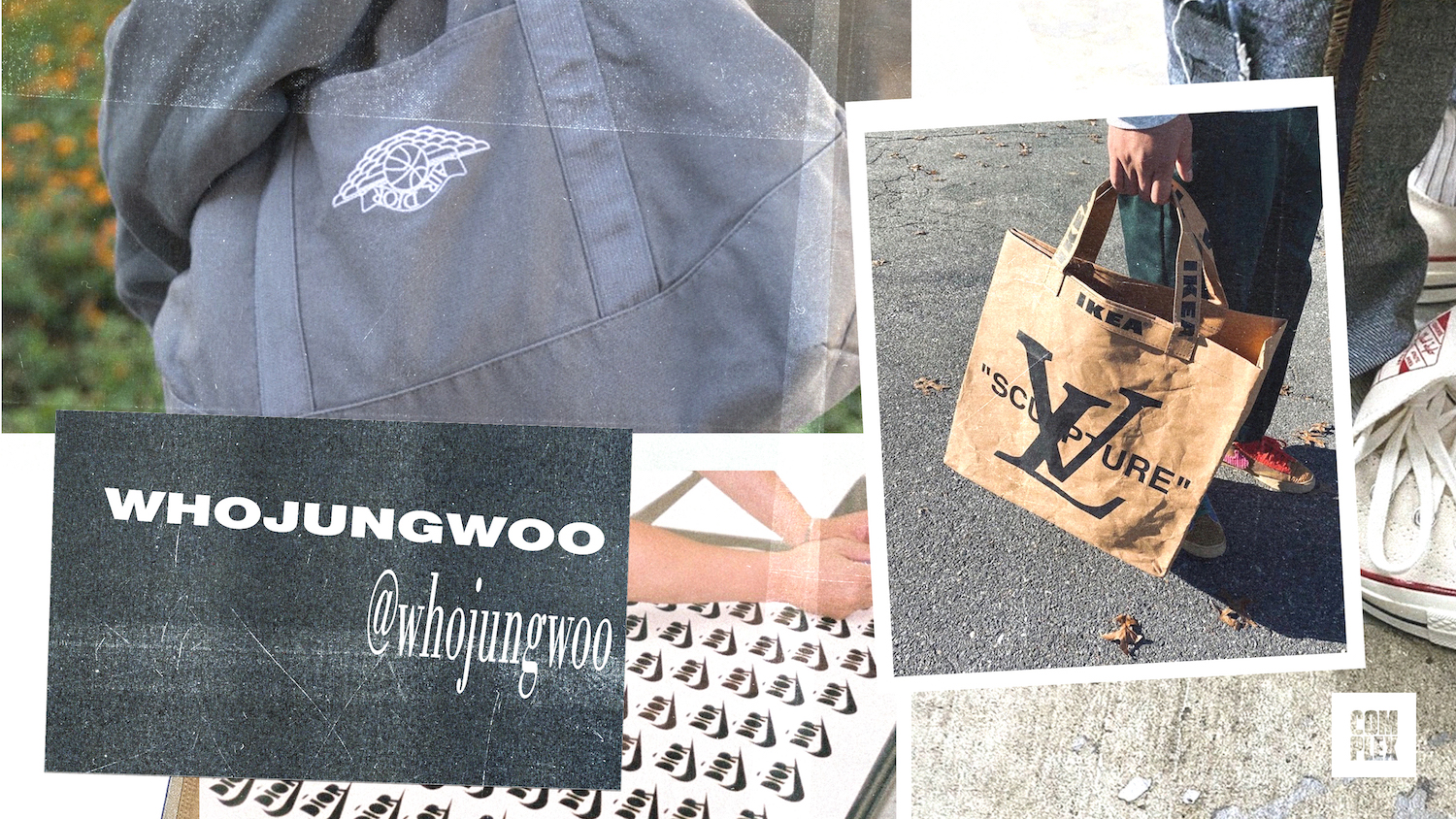
For anyone into luxury bootlegs, it’s highly likely that you are already aware of Jung Woo’s work. The Korean, Los Angeles-based designer went viral last year after he dropped some Ikea x Virgil Abloh Frakta bags screenprinted with a giant Louis Vuitton logo. Recently, WhoJungWoo has been known for his popular bootleg Nike Dior and Air Dior merch, which twist Nike’s iconic logo to carry the name of one of the world’s most respected luxury houses. Woo’s work playfully questions the idea of what exactly defines luxury while also following the footsteps of legendary streetwear bootlegs like the Menthol 10s.
“I taught myself everything, the internet is a powerful tool. I learned the art of printing through trials and tribulations, which is the best way to learn how to do anything,” says Woo. “Consistency is key, learning each step, and walking the walk. That’s what opened all these doors for me.”
Woo says that he had been designing clothing since he was a teenager and began making pieces out of his mom’s basement in Maryland. His first project involved just heat pressing some tiger stripes onto the South Korean National Team soccer jersey. He said that he realized his brand was taking off when he sat in LAX one day and noticed a person he never met was wearing one of his T-shirts. Woo had always announced drops and sold products through Instagram. But when he realized that his drops were selling out in less than half an hour, he took a leap of faith and moved out to Los Angeles to start his own production company.
“Now that I have my own production company, I’m able to turn ideas into actual products even faster,” says Woo. “I’m blessed to have my own resources to support my vision. I’m just trying to build everyday and keep things moving. I knew I didn’t want to work for somebody else, so I just started doing my own thing.”
Since gaining traction with his bootleg Nike merch, Woo has explored designing pieces based on other interests, such as his own passion for basketball. A series of T-shirts he released were inspired by Dennis Rodman’s colorful hair. It was recently seen on Quavo, who also copped one of his bootleg Nike T-shirts.
“Growing up I related to Rodman because he was so different but I feel like he didn't get enough credit for it back then,” says Woo. “So I wanted to honor him with my own WJW twist on it, which led me to this design.”
In the near future, Woo seeks to launch his own original WJW line. But for now, he’s having fun putting a fresh twist on the brands that inspire him
“You have to continuously challenge yourself in order to grow,” says Woo. “Moving to the other side of the country isn’t an easy thing. But my supporters showed me so much love that it made the jump so much easier.”

Doraemon. The red Teletubby, Po. Sonic the Hedgehog. Louis Vuitton logos. There’s no telling what you might see when you closely examine a custom garment created by Philadelphia-born, New York-based designer Tony Rainwater.
“I believe you tell a story every time you get dressed. Clothing is a way to express yourself everyday,” says Rainwater. “I make clothing that makes me happy, that gives me energy when I wear it, that makes me feel something.”
Rainwater says he never received any formal training in fashion or graphic design. He’s self taught and carved out his own unique lane with eye-catching and colorful items like pants, jackets, and T-shirts covered in collages of everything from anime to random old photographs that look like they were pulled out of a fashion magazine from the ‘90s. They’ve already caught the attention of some big names too with stars like DJ Mustard and Quavo purchasing pieces. He recalls a specific time when Offset stopped him in the street to compliment his outfit. It just so happened to all be his own designs.
All of the items are made to order by hand and can take as much as 30 hours to complete. While that’s currently how he operates, he says the dream is to have his own store in Manhattan’s East Village.
“I just want to keep making clothing that catches people's eyes and isn’t boring. I want to have a runway show and a physical store in the East Village of Manhattan, where I live and love to walk,” he tells Complex. “I would love my shop to become a sort of destination for young people who like to make statements when they get dressed, kind of like what the stairs of Search & Destroy on St. Marks have become.” —Mike DeStefano
